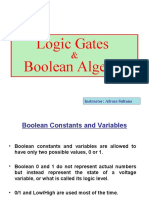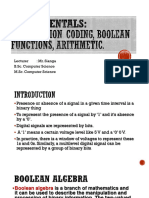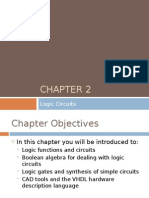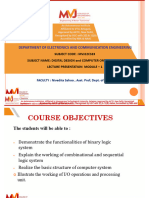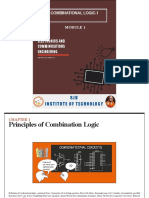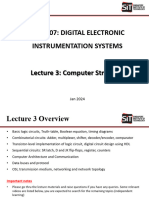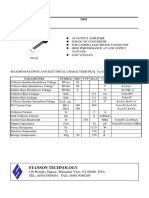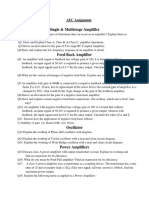0% found this document useful (0 votes)
35 views275 pagesDLD Lecture
The document provides an overview of digital electronics, focusing on logic circuits, gates, and their operations, including AND, OR, NOT, XOR, and XNOR. It covers concepts such as analysis and synthesis of logic networks, Boolean algebra, minterms, maxterms, and Karnaugh maps for minimizing logic expressions. Additionally, it discusses universal gates like NAND and NOR, emphasizing their significance in circuit design.
Uploaded by
afif1716Copyright
© © All Rights Reserved
We take content rights seriously. If you suspect this is your content, claim it here.
Available Formats
Download as PDF, TXT or read online on Scribd
0% found this document useful (0 votes)
35 views275 pagesDLD Lecture
The document provides an overview of digital electronics, focusing on logic circuits, gates, and their operations, including AND, OR, NOT, XOR, and XNOR. It covers concepts such as analysis and synthesis of logic networks, Boolean algebra, minterms, maxterms, and Karnaugh maps for minimizing logic expressions. Additionally, it discusses universal gates like NAND and NOR, emphasizing their significance in circuit design.
Uploaded by
afif1716Copyright
© © All Rights Reserved
We take content rights seriously. If you suspect this is your content, claim it here.
Available Formats
Download as PDF, TXT or read online on Scribd
/ 275





